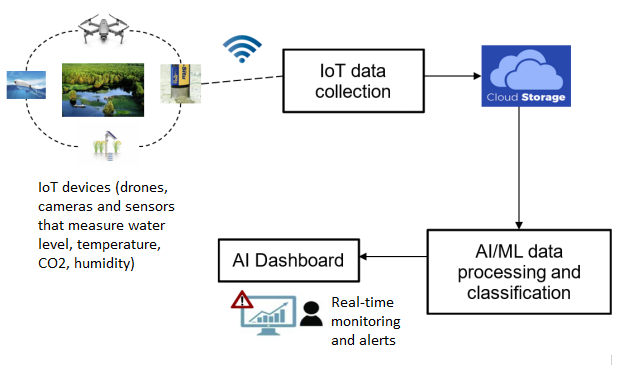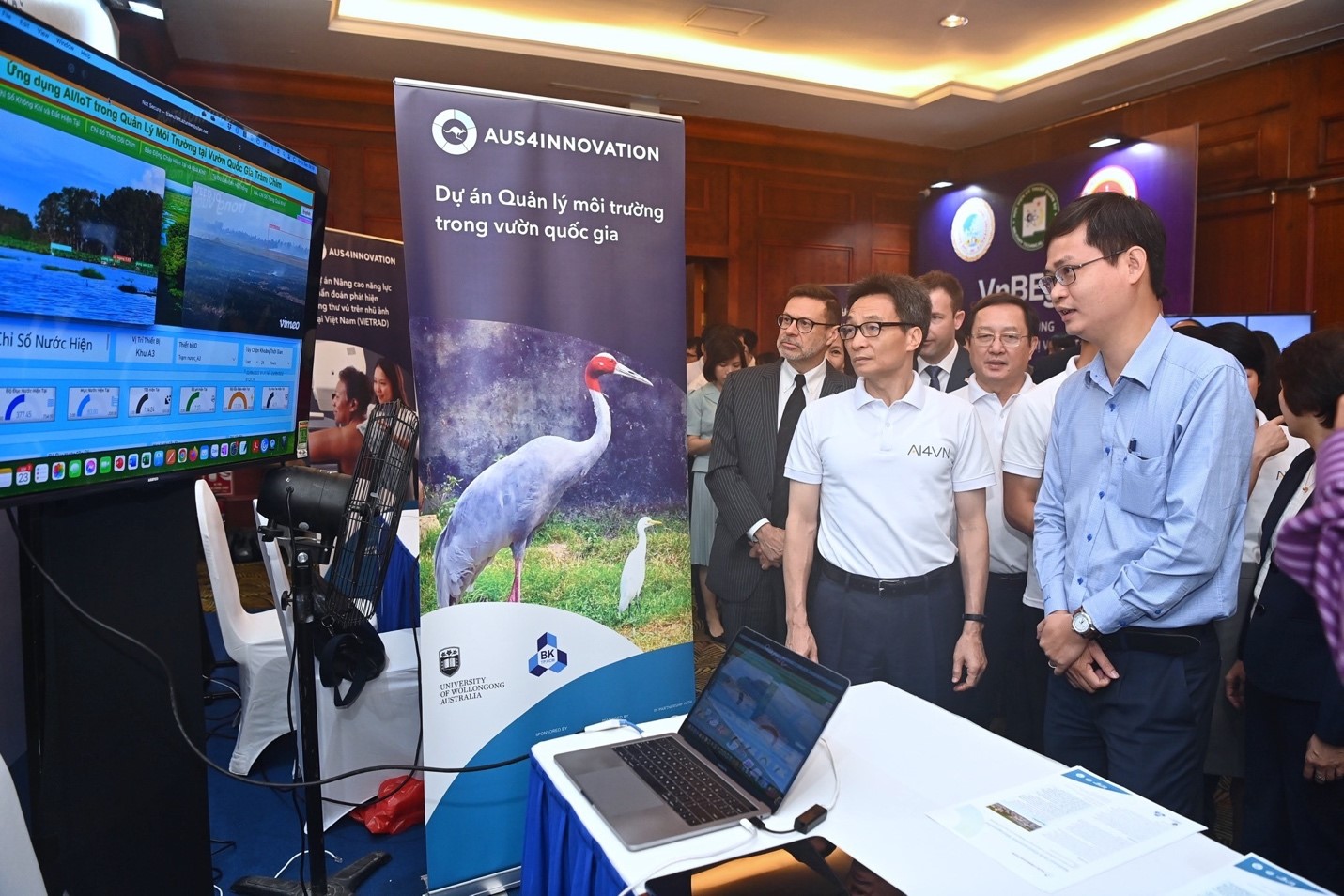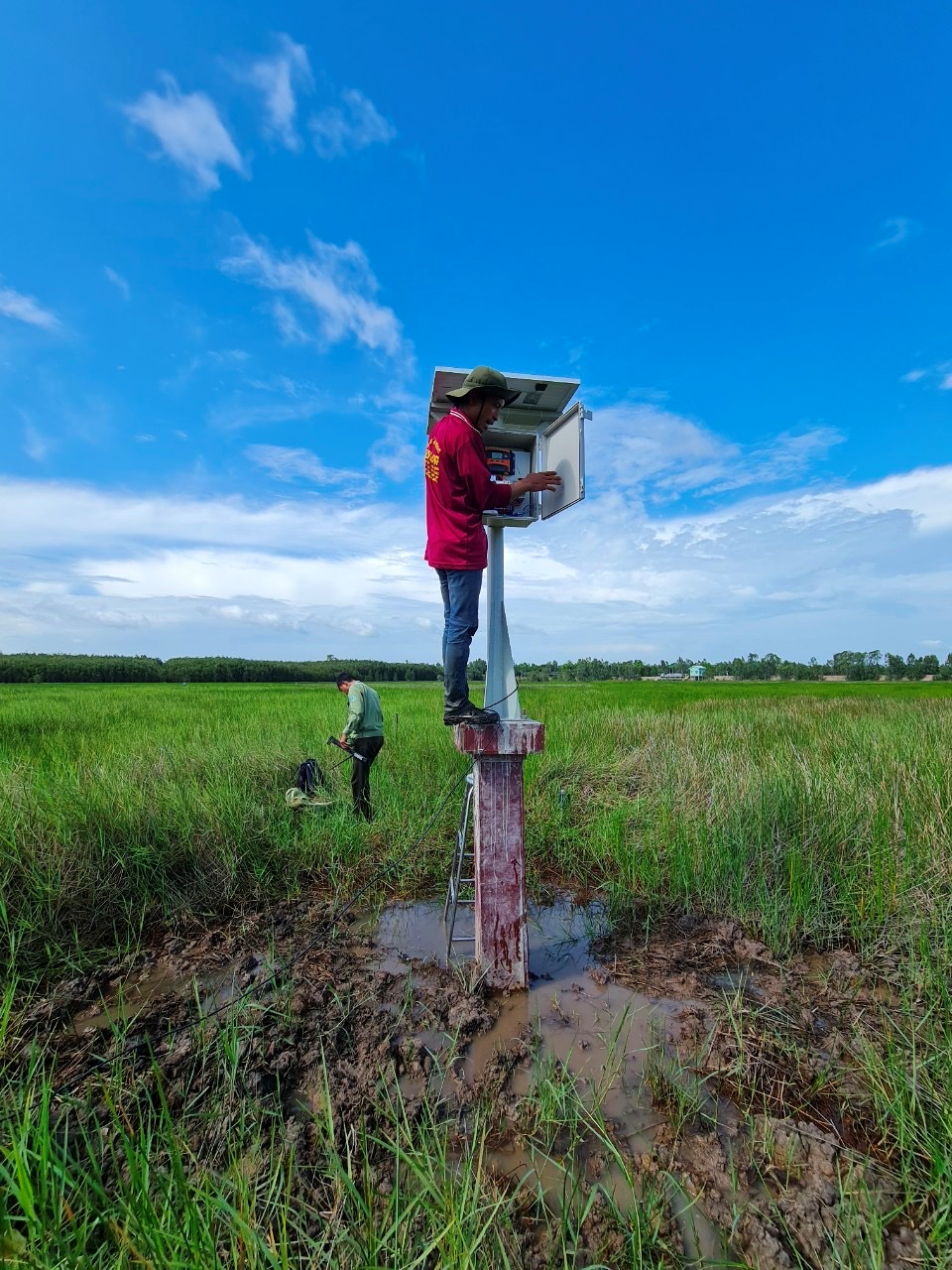Application of AI/IoT in environmental management in Tram Chim National Park
Tram Chim National Park is located in the Dong Thap Muoi area of Dong Thap province (Vietnam), and is one of the last remnants of the endangered wetland ecosystem. Tram Chim has significant tourism and biodiversity values, providing a habitat for more than 230 species of birds and 130 species of fish, including the rare sarus crane that is listed as endangered on the IUCN Red List. Tram Chim is recognized as a Ramsar site of international importance under the Ramsar Convention. However, the current environmental management and research in Tram Chim is hampered by incomplete and infrequent survey data, due to lack of access to remote locations or those with frequent floods. This solution brings together leading experts in Artificial Intelligence (AI, Machine Learning (ML), Internet of Things (IoT), Environmental Technology and Biodiversity Conservation to transform the environmental management of the National Park.
Our solution will take advantage of a variety of IoT devices (for example, unmanned boats, cameras and sensors that measure turbidity, water level, temperature, CO2, humidity) to be able to conduct regular continuous surveys over a large area in Tram Chim. AI/ML technologies will be leveraged to process, analyze, and classify large amounts of data into indicators that provide real-time insights into the health of the Park’s ecosystem (animals, plants, and water). The expected outcome of the project is an AI-powered digital console that is easily accessible to various stakeholders of the Park (such as rangers, managers, and researchers) through a variety of computing devices (such as personal computers, mobile phones, tablets) to support management and suitable decision-making regarding water levels, weed growth and wildlife. The digital console will also provide a clear demonstration of how management interventions impact key indicators of the Park’s ecosystem health.
We build an end-to-end solution that leverages Artificial Intelligence (AI) technology to transform the environmental management of Tram Chim National Park. The architecture of the system levels is shown below:

The main building blocks of our system are as follows:
- IoT data collection: This block includes IoT devices (such as drones, cameras, cameras, and water sensors) that will collect data (e.g., images of animals, plants, water level, turbidity, temperature, CO2, and other parameters) in all areas of the Tram Chim ecosystem. Data will be collected continuously, stored in the cloud, and processed in real time to provide updates on the state of the Park’s ecosystem.
- AI/ML data processing and classification: This block includes a series of image processing algorithms and models and AI/Machine Learning, which automatically process and analyze data to generate various insights, such as counting animals and species, classifying plants and identifying them in different states, and determining the water level in different areas of the Park.
- Digital AI-powered dashboard: This block can be easily accessed by various stakeholders of the Park (such as rangers, managers, and researchers) through common computing devices (such as personal computers, mobile phones, or tablets) to support decision making. The digital console will also provide a clear demonstration of how management interventions impact key indicators of the Park’s ecosystem health. In addition, the console will be able to issue warning messages to users/administrators in case of danger such as fire, low water level or high salinity.
This product represents a major digital transformation in the management of complex wetland ecosystems. This system will be the first of its kind in Vietnam. Specifically, it addresses the following:
- Leveraging hyper-connectivity through IoT infrastructure development, including drones, sensors, digital console, and cloud storage. This structure is powered by AI and Machine Learning, which analyzes Big Data collected by IoT devices. This infrastructure is innovative and does not exist in Tram Chim or any other National Park in Vietnam.
- Enhancing opportunities for “sharing” through the public provision of the system framework and environmental data collected from the system to the country and the international community for sustainable research and development, resulting in global impacts.
- Developing new and more effective business models for the environmental management of Tram Chim National Park and wetland landscapes through data-driven decision-making approaches.
- Improving productivity and efficiency by reducing the labor costs of manually collecting, processing, and classifying data to monitor the health of the Park’s ecosystem. These pieces of work are now automated by using reliable AI technologies. Promoting the more comprehensive, sustainable development of Tram Chim National Park and wetland ecosystems, thus improving the health of animals and people in the local area.
Currently, the project is implemented under the cooperation between University of Technology – VNUHCM, Tram Chim National Park and the University of Wollongong, Australia. The product is being deployed and operated onsite at Tram Chim National Park. The entire operation procedure of the product has been transferred to Tram Chim National Park to operate and manage the Park. The technology to build IoTs monitoring stations and AI camera stations is owned by University of Technology, VNUHCM and ready to be transferred to interested organizations and local agencies for implementation. Bird recognition and fire alarm technology based on machine learning developed by the University of Wollongong have also been completely transferred to the research team of University of Technology, VNUHCM and ready to be transferred to other interested agencies and National Parks.
Images of the prototype




Contact of the authors:
Assoc. Prof. Pham Quoc Cuong, PhD
University of Technology – VNUHCM, 268 Ly Thuong Kiet, Ward 14, District 10, Ho Chi Minh City
Email: cuongpham@hcmut.edu.vn
Phone: 0983846252
VNUHCM Annual Conference 2022
